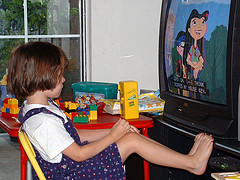The United States has a greater share of its population behind bars than any other nation. Yet this captive audience is almost never captured by large national surveys used to study the U.S. population. This might distort what we think we know about black progress in recent decades, the Wall Street Journal reports, because a large enough swath of the young African American male population is incarcerated and unaccounted for by these surveys.
Among the generally accepted ideas about African-American young-male progress over the last three decades that Becky Pettit, a University of Washington sociologist, questions in her book “Invisible Men“: that the high-school dropout rate has dropped precipitously; that employment rates for young high-school dropouts have stopped falling; and that the voter-turnout rate has gone up.
For example, without adjusting for prisoners, the high-school completion gap between white and black men has fallen by more than 50% since 1980, says Prof. Pettit. After adjusting, she says, the gap has barely closed and has been constant since the late 1980s. “Given the data available, I’m very confident that if we include inmates” in more surveys, “the trends are quite different than we would otherwise have known,” she says.
Voter turnout is another example, especially in light of this year’s presidential election.
…commonly accepted numbers show that the turnout rate among black male high-school dropouts age 20 to 34 surged between 1980 and 2008, to the point where about one in three were voting in presidential races. Prof. Pettit says her research indicates that instead the rate was flat, at around one in five, even after the surge in interest in voting among many young black Americans with Barack Obama in the 2008 race.
“I think that’s kind of stunning,” Prof. Pettit said.
Experts debate the feasibility of including prisoners in such surveys, as well as how to make the best use of available data. Even Pettit admits, “These are really, really tricky things.”








